
Hudson Soft Co., Ltd. was a Japanese video game company that released numerous games for video game consoles, home computers and mobile phones, mainly from the 1980s to the 2000s. It was headquartered in the Midtown Tower in Tokyo, with an additional office in the Hudson Building in Sapporo.

Akagi: Yami ni Oritatta Tensai is a Japanese manga series written and illustrated by Nobuyuki Fukumoto. First published in 1991 in Takeshobo's weekly magazine Kindai Mahjong, it is a spin-off prequel to the author's previous work Ten. It revolves around Shigeru Akagi, a boy who defeats yakuza members well versed in mahjong at 13. He returns to the game six years later, carrying a mythical status and still impresses his opponents.
TwinBee (ツインビー) is a video game series composed primarily of cartoon-themed vertical-scrolling shoot-'em-up games produced by Konami that were released primarily in Japan. The series originated as a coin-operated video game simply titled TwinBee in 1985, which was followed by several home versions and sequels. The character designs of almost every game in the series since Detana!! TwinBee in 1991 were provided by Japanese animator Shuzilow HA, who also planned and supervised most of the subsequent installments in the TwinBee series. The series also inspired a radio drama adaptation that lasted three seasons in Japan, as well as an anime adaptation.
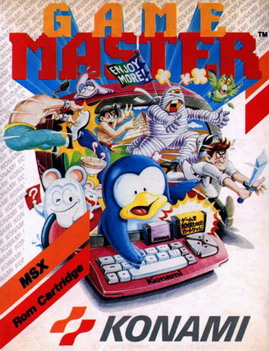
The Game Master is a utility cartridge released by Konami on December 12, 1985 in Japan and Europe. It is meant to be used in conjunction with Konami's own MSX game cartridges, allowing users to select their stages, adjust the number of lives, save progress and high scores, make screen dumps, and play in slow motion, among other uses.

Haunted Castle is a 1987 platform game developed and released by Konami for arcades. It is the second arcade game in the Castlevania franchise, following Vs. Castlevania, an arcade port of the original 1986 NES video game released in North America. Unlike the previous arcade title in the franchise, Haunted Castle is not a direct port of an existing console game, but a newly-developed arcade game running on custom JAMMA-based board.
Mobile21 Co., Ltd. (モバイルニジュウイチ株式会社) was a Japanese video game developer that was a 50/50 joint venture between Nintendo and Konami established on October 7, 1999. Mobile21 primarily concentrated on next-generation Game Boy Advance development, with a particular interest in mobile phone linking features.

Family BASIC is a consumer product for programming on the Family Computer video game console. Family BASIC was launched on June 21, 1984, to consumers in Japan by Nintendo, in cooperation with Hudson Soft and Sharp Corporation. A second version titled Family BASIC V3 was released on February 21, 1985, with greater memory and new features.
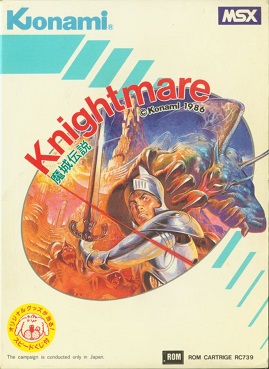
Knightmare is a 1986 vertically scrolling shooter video game developed and published by Konami for the MSX home computer. It was included in compilations for the MSX, PlayStation and Sega Saturn, followed by a port for mobile phones, and digital re-releases for the Virtual Console and Microsoft Windows. It is the first entry in the Knightmare trilogy. The game stars Popolon, a warrior who embarks on a quest to rescue the princess Aphrodite from the evil priest Hudnos. The player must fight waves of enemies while avoiding collision with their projectiles and obstacles along the way, and facing against bosses.
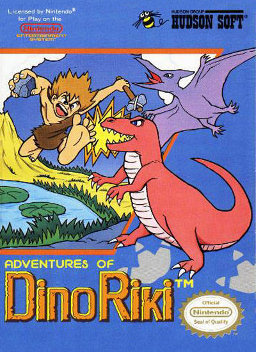
Adventures of Dino Riki, known in Japan as Shin Jinrui: The New Type, is a scrolling shooter video game developed by Hudson Soft for the Nintendo Entertainment System. The player takes on the role of the titular Dino Riki in a prehistoric setting, tasked with completing a series of vertically-scrolling stages while contending with various enemies, platforming sections, and bosses. Power-ups that improve the player's weapons or mobility can be uncovered by hitting boulders scattered about each stage.
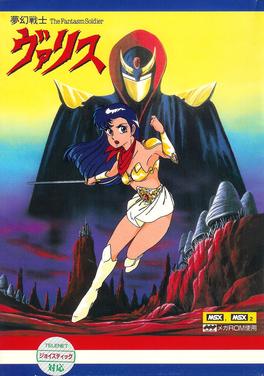
Valis: The Fantasm Soldier is a 1986 action-platform video game originally developed by Wolf Team and published by Telenet Japan for the MSX, PC-8801, X1, FM-7, and PC-9801 home computers. It is the first entry in the Valis series. It stars Yuko Asou, a Japanese teenage schoolgirl chosen as the Valis warrior and wielder of the mystical Valis sword to protect the Earth, the land of spirits, and the dream world Vecanti from demon lord Rogles. Throughout the journey, the player explores and search for items and power-ups, while fighting enemies and defeating bosses to increase Yuko's attributes.
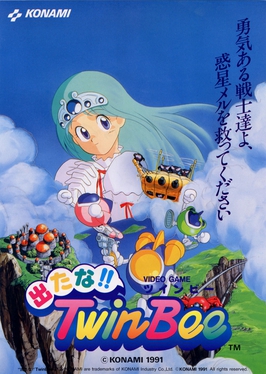
Detana!! TwinBee, released in Europe and North America as Bells & Whistles, is a 1991 vertically scrolling shooter arcade video game developed and released by Konami. It is the fifth entry in the TwinBee series and the second to be released for arcades following the original TwinBee. Set several years after the events of TwinBee, players assume the role of Light and Pastel taking control of TwinBee and WinBee to defeat invading forces of the evil alien Iva and save planet Meru after receiving an SOS message sent by Princess Melora.
Puzzle Series is a series of puzzle video games by Hudson Soft.
Dragon Ball Z Game Music is a series of soundtracks of various video games based on the popular anime series Dragon Ball Z for the Famicom, Super Famicom, PlayStation, and Saturn consoles. They were produced from 1993 to 1996. Most, with some exceptions, were distributed by Forte Music Entertainment, and were released in Japan only.

Gaiapolis is a 1993 action role-playing beat 'em up arcade game developed and published by Konami. Taking place in a fantasy world, the game follows prince Gerard Himerce, joined by the half-human fairy Elaine Shee and the exiled dragon duke Galahad, seeking vengeance for destruction of his homeland against the Zar Harc empire led by the King of Darkness and prevent him from resurrecting an ancient demon. Through the journey, players explore and search for items to progress and power-ups, fighting enemies and bosses, and gaining experience points to increase their character's maximum health and level.

Finalizer - Super Transformation is a vertically scrolling shooter released in arcades by Konami in 1985. The player controls a jet flying through several different states in America shooting different enemies.
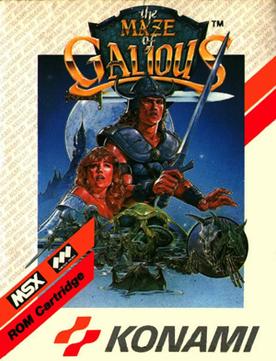
The Maze of Galious is a 1987 platform-adventure video game developed and published by Konami for the MSX home computer. A reworked conversion was released for the Family Computer. Both versions were re-released digitally for Microsoft Windows. The second entry in the Knightmare trilogy, it follows the respective hero and former damsel in distress of the previous game, Popolon and Aphrodite, as they embark on a journey through Castle Greek to free their unborn child Pampas from the evil priest Galious. The player explores each map in search for items and power-ups to progress, while also fighting enemies and bosses.

Undeadline is a 1989 vertically scrolling shooter video game developed and originally published by T&E Soft for the MSX2 and MSX2+ home computers. It was later ported to the X68000 computer and Sega Mega Drive, published by Palsoft, followed by digital re-releases for Microsoft Windows. Both the MSX2 and X68000 versions also received physical re-releases by Japanese retailer BEEP. It follows a group of characters in rescue of queen Althea from Zidane, a kingdom surrounded by barriers connected with the demon world, whose monsters have overflowed it. Controlling either a fighter, wizard, or ninja, the player can choose from six stages and play them in any order, fighting against waves of enemies and bosses, while defending or avoiding collision with their projectiles and other obstacles.














